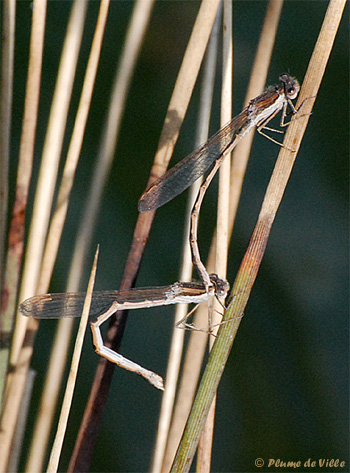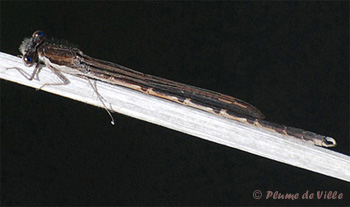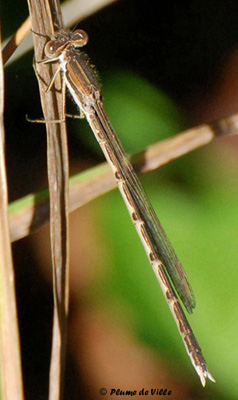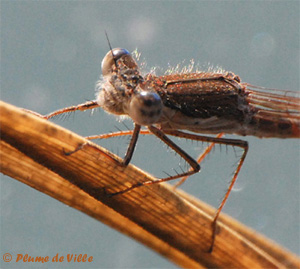Plume de Ville
Libellules.
°°°°°°°°°°°°°°°°°°°°°°° °
April 2009
9 April
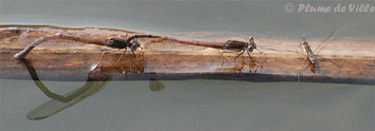
Sun,
heat,
no wind and over water, on the water, leaves and branches, the Common
Winter
Damselfly or Brown Emerald Damselfly [Sympecma
fusca -Zygoptera-Lestidae] (Leste brun), lays. Concentrated in their
task, the Gerris (Pond skater) surprised at its mounted on the rod, do
not disturb
them.
Only species to spend the winter at the adult stage, at the first fair
days they mate and lay eggs in the twigs, stems, branches and floating
debris.
Most
often its
sits with the wings folded along the abdomen.
Also
called "Brunette hivernale" because of its bark brown colour and its
ability to wintering at
imago stage.
It
spent the winter as an adult
hiding
"at land" under a bark, a stone or a rod in a meadow, a bush.
For
all other Odonata it is the eggs or larvae that go through the winter.
Eggs will hatch 3-4 weeks later.
(02-060409)
10 April
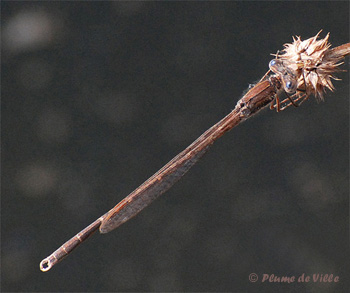 Common
Winter Damselfly or Brown Emerald Damselfly [Sympecma fusca
-Zygoptera-Lestidae] (Leste
brun)
Common
Winter Damselfly or Brown Emerald Damselfly [Sympecma fusca
-Zygoptera-Lestidae] (Leste
brun)
Little Damselfly (3-4cm) in shades of chocolate brown, it is difficult
to find
when it is in the dry grass prairies. At this time of breeding they are
easier
to see.
Clear body punctuated with grim torpedo-shaped marks.
(Males)
Wings along
the body, the long brown pterostigmas of the hind and fore wings do not
overlap.
A
right, autumn
female with metallic torpedo-shaped marks on a clear body and brown
eyes
(September 2008).
Two dark
stripes on the thorax. Strait line for the upper band.
At
left a
male and a female held by the male.
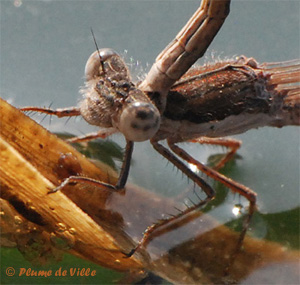
Ovipositor of the female. Spawning takes place here under the water and in the plant that the female pierces to introduce its egg.
Brown emerald
damselflies will live this spring just the
time to spawn. When laying is over, they
disappear.
(Photos 02-060409)



